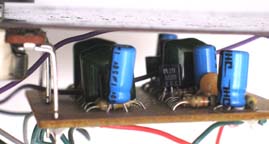THE BIG MUFF π - A HISTORY OF ALL VERSIONS - Part 1
Click on any Big Muff in the image below to go directly to that section
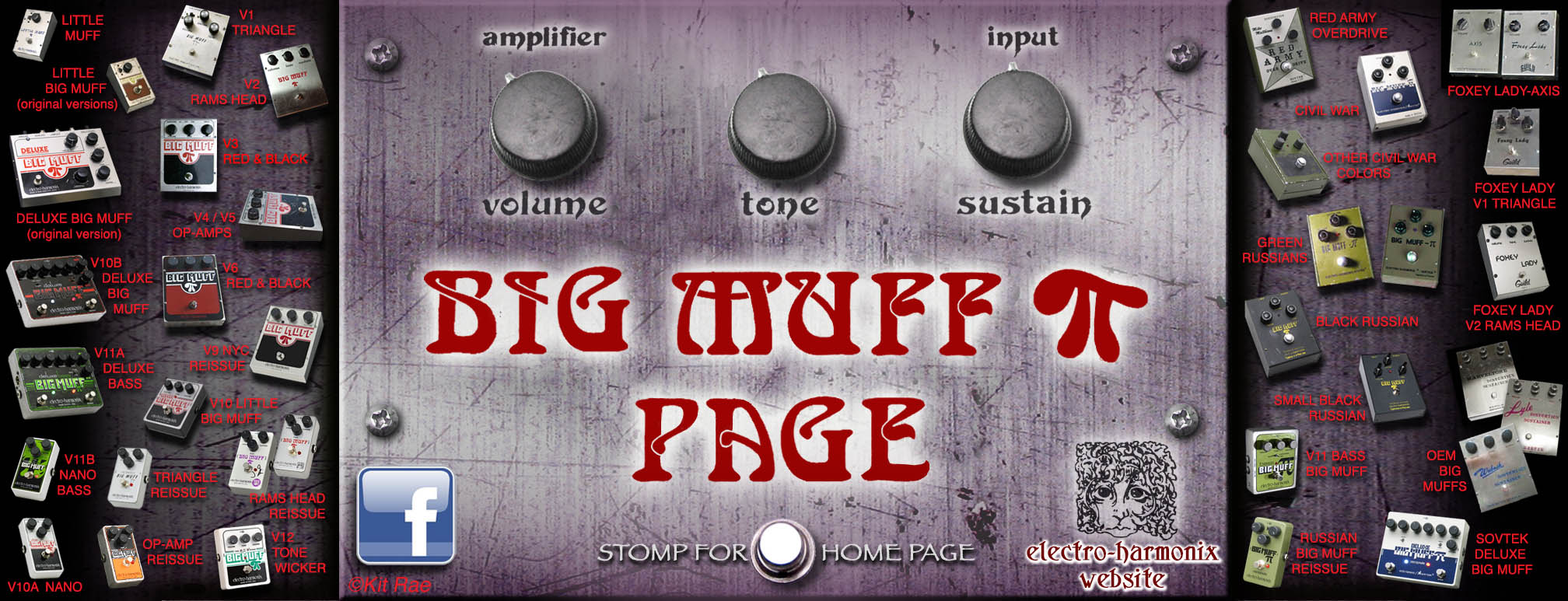
NOTE: This website is constantly updated as new information becomes available. Version, Edition, and Revision numbers listed here are not actual Electro-Harmonix identifiers. They are my categorizations, for identification purposes only. Permission required to repost any information from this site in any ebay listing. Website and contents ©Kit Rae. Last updated June 2016
THE RED AND BLACK BIG MUFF π - VERSION 3
Circa 1977-1978 (Pots typically date as early as 1976 and as late as 1979)
Model Number: EH3003
Circuit Designer: Bob Myer with Mike Matthews
Circuit Variants: Approximately 10
Edition Versions: 3 - First edition with no AC marked on front, and second edition with AC adaptor jack added, 3rd edition with TONE BYPASS added. Some first editions have no AC power jack.
True Bypass: No
Power: Current draw approximately 3 mA. 9V battery or AC power adaptor jack. Jack is 1/8" (3.5mm) plug tip positive. See POWER section below for important adaptor and daisy chaining power requirements.
Enclosure Size: 6 7/8 " x 5 1/2" x 2 1/4"(short end) x 2"(long end) / 174mm x 138mm x 35mm(short end) x 57mm(long end)
Packaging: White corrugated cardboard box with red printing
Place of Manufacture: Manhattan, New York, USA. 27 West 23rd Street, New York, NY, 10010
Replacement Parts
Around 1977 the graphics changed to the now iconic, bold red and black design that the Big Muff is most associated with. This version 3 of the Big Muff also gained an AC power adaptor jack, a first for the Big Muff. There was a third edition of the V3 with a tone bypass switch added that was made simulaneously with the V4 and V5 op-amp Big Muffs. Externally it looked idetical to the version 6, but internally it had the same circuit board as the V3, and the same offset pots, making the knobs all have different zero points. Though the new V3 graphics were first advertised in late 1976, I do not believe these were available until 1977. True V3 Big Muffs are somewhat rare. Note that the early V9 Big Muff is often confused with the V3 due to the fact that they have the same graphics and knobs, but the V3 never had an LED or battery door on the bottom. The list price was around $49.95, but these could be found for $32 or less.
GRAPHICS - The graphics on the front of the box changed radically to a red and black design with huge red Big Muff letters in a blocky font (ITC Pioneer). This graphic was so popular that it remained on all subsequent USA made Big Muffs, including the Big Muffs reissued in 2000, and others that followed. Red and black colors just seem to go together well, especially in simple but dominant designs. Throughout history these colors have made lasting symbols, from the flags and emblems of Third Reich in World War II to the iconic Coca-Cola logo, and now the Big Muff Pi. Most of the Version 3 Muffs have the letters "AC" printed on the front face, above the new power jack, but the very early production V3 Muffs did not have the AC or power jack. Third edition V3's replaced the ON/OFF graphics with the words TONE BYPASS. There was a rare color variant, likely a mistake when making the silk screens, where the lines above and below the Big Muff logo, normally red, were printed in black.
CONTROLS / KNOBS - The on/off switch from previous versions continued to be on the back of the V3. The foot switch is a Carling SPDT. Pots had plastic D shafts, as on previous Muffs. Almost all V3 Muffs used the same black plastic Daka-Ware style knobs that were introduced on the V2 Big Muff. Some V3 third (tone bypass switch) editions were made with the new black plastic "hockey puck" shaped knobs. After years of using knobs from other suppliers, E-H decided to invest tooling money to make these puck knobs, injection molded in Taiwan. Similar knobs are still used on the V9 NYC reissue versions being produced since 2001, and many other E-H pedals. Some examples may be seen with different or after market replacement knobs. As on all previous Muffs, none of the three control knobs start at zero in the same place. On the TONE knob, treble was to the right and bass to the left. This is due to the potentiometers (pots) being mounted to the circuit board with the leads wrapping over the edges of the board - one over the left side, one over the top, and one over the right side. A third edition of the V3 was produced around 1978-79 with the on/off switch changed to a Tone Bypass switch. This appears to have been in production at the same time the tone bypass V5 op-amp Big Muff was, and prior to the V6 tone bypass transistor Big Muffs. Switching the bypass on disabled the tone circuit. The tone knob had no effect when in bypass mode.
CIRCUIT - All V3 circuit boards were marked with the number 3003 and a stylized “EH” symbol, with an identical circuit trace pattern to the V2. The component values, while much more consistent than V1 and V2 Big Muffs, varied slightly from unit to unit, with at least six variants being identified.
- Some of the very first V3 Big Muffs made have exactly the same circuit as the last V2 Big Muffs, with no power jack or power filtering components, typically useed PNP BC239C (TO92 package) transistors, white box caps, and mostly large carbon comp reisistors. Those first edition V3 Muffs can be identified because they lack the letters "AC" on the front face, and are essentially Ram's Head production Big Muffs with different graphics.
- V3 Big Muffs were also made with NPN (negative ground) 2N5088 half cylinder shaped (TO92 package) transistors and PNP (positive ground) 2N5087, NPN MPSA18, and possibly others. Around 1978 a Tone Bypass was added in place of the power switch. Most of those have MPSA18 transistors.
- There is an additional resistor and a large capacitor added for the AC power section, not found on the V2.
- Some V3 circuits are seen with ceramic or polymer caps, but most are box shaped polyester film and barrel shaped electrolytic type caps. A few V3 Muffs have been seen with 'tropical fish' tone caps. The rectangular shaped caps are easily identified by their multi colored bands.
- Resistors were large carbon composition type mixed with smaller carbon film type in early V3s, but eventually all caps changed to the smal carbon film type.
- Diodes are silicon, with blue or red cases.
- Circuit board colors varied through the production, roughly in this order: brown, yellow, orange, white, light green, tan.
POWER - A 1/8" power jack to plug in an AC to DC converter was added for the first time to a Big Muff. Some very early, and very rare, examples of the V3 have no power jack, and are essentially V2 Big Muffs with V3 graphics. The V3 could also be powered from a 9v battery. The jack is 1/8" (3.5mm) plug tip positive. This is reverse polarity of typical modern center negative pedals so use a tip positive E-H power supply or use a converter adaptor like the 1 Spot C35 3.5mm Converter. You can also replace the power jack with a standard 9V power jack that works with standard negative tip Boss style power supplies. If you do that, be sure to solder the correct + and - leads connected to the existing jack, or you can find out where to wire the + and - wires by looking at the wiring diagram for your version, or simply follow the red (+) and black (-) wires from the battery snap. You can also use a 9V battery snap adapter like the 1 Spot CBAT and connect to a standard power supply with a negative center barrel type jack, like the Boss PSA120T, 120S, or 1 Spot 9V DC Adapter. Note while most V3 Big Muffs are negative ground (NPN) circuits, a few were positive ground (PNP). The power of a PNP circuit cannot be daisy chained with standard NPN pedals with a negative center plug. The common ground on NPN pedals is negative, so if you daisy chain power to a PNP positive ground pedal to a will short out the power. See the CIRCUIT entry to find out if your pedal is PNP or NPN.
TONE BYPASS V3 - Alhough somewhat rare, there are Big Muffs in the V3 enclosure that include a tone bypass switch like the later V5 and V6 Big Muffs. These had the old V2 3003 circuit boards, non aligned pots dated 1979, tone bypass switch, AC power jack, and both "AC" and "TONE BYPASS" printed on the face. Each had identical circuit component types and values, including MPSA18 transistors. The component values were slightly different from most early V3s, but the same as some V2 Big Muffs (like the J Mascis circuit) and identical to the V6 Big Muff schematic, which this version transitioned into. The V5 op-amp Big Muff was commonly assumed to be the first one with the Tone Bypass feature, but Howard Davis, Manager of Analog Circuit Design for E-H from 1976-1981, has stated the tone bypass feature was already in use before his design work on the op-amp version. This is the version he was referring to. Based on the circuit boards, pot dates, and various accounts from owners, it seems the V3 did not actually go out of production at all during the time the V4 and V5 op-amp versions were made. There may even have been tone bypass V3s in production just before or at the same time as the first op-amp version. Why E-H would have three versions of the Big Muff Pi on the market at the same time is a mystery, unless they were just testing the market to see how the sound of new op-amp version and the tone bypass was accepted. It seems this V3 version with the tone bypass won in the end, because it became Version 6.
There was NO LED light on the V3. Many people confuse the later V9 Big Muff produced in 2000 with the V3, but none of the vintage USA Big muffs produced prior to 2000 included an LED light, nor a battery door on the botom. These had four rubber feet on the bottom and shipped in a corrugated cardboard box.
CLONES OR SIMILAR PEDALS - Note that since there were several versions of the real Big Muff V3 circuit there is no one version to clone, and some clones have modifications to the Muff circuit design. For those reasons most of clones sound different from each other. Since the circuit variations were the same as the late model V2 Ram's Head BMP circuit variations, see that section for clones and similar pedals. Tym Guitars Big Mudd is one of the few a boutique V3 replicas (Australia).
THE V3 SOUND - Keep in mind that the V3 is just a graphics change of the V2 "Ram's Head" Big Muff, so the first V3s had essentially the same circuit variant inside as the last V2. The circuit continued to evolve, but there were less circuit variants inside the V3 box than the V2. By 1978 the circuit had evolved into an unchanging standard schematic, as in the "Tone Bypass" V3.
Most V3 circuit variants had more sustain and sounded slightly more aggressive than the typical V2 Big Muffs. The examples of V3s I have played that included the tone bypass switch were very agressive and fuzzy in normal mode. In general, most had a fairly tight and controllable low end. The mid range was very "scooped", or removed, making the sound get lost in a band mix when playing live with certain amps and playing certain types of music. The bass and treble frequencies varied slightly from one V2 circuit variant to another
V3 Sound Clip - Cherub Rock with - Played with a strat and Les Paul through Marshall
CLICK A PHOTO TO ENLARGE
Shown above - On the left is an early first edition V3 Big Muff from around 1976 with wood box and warrantly. Note that “AC” is not printed on the top of the enclosure as on later models, but this version includes the AC power jack, a first for a Big Muff. Some rare first edition V3s have no power jack. On the right is another V3 with no AC graphic (thanks to edkoppel for pix on right)
Shown above - Electro-Harmonix magazine and catalog ads promoting the V3 Big Muff from 1976, February 1977, and a large ad circa 1978
Shown above - Two typical first editionV3 Big Muff circuits with BC239 transistors and box caps with pots dated 1976. Values were much more consistent than the V1 and V2 circuit, but still varied from unit to unit. These two have slightly different component values from the common V3. Note the positioning of the potentiometers which caused the three knobs to each start with zero in a different position. The 100K pot on the right side of first circuit is not original.
None of the three control knobs start at zero in the same place on V3 Muffs. This is due to the potentiometers (pots) being mounted to the circuit board with the leads wrapping over the edges of the board, a common feature of all V1, V2, and V3 Muffs. They changed to an inline configuration in 1978 or 1979.
Shown above - Second editionV3 Big Muff from 1977 with “AC” printed on the top, denoting the new AC power adaptor jack
Shown above (left to right) - Various D-shaft knobs Electro-Harmonix used on Big Muffs and other E-H pedals. (A) Ram's Head/V3 knobs marked HDCO, (B) Daka-Ware V3/V4 knob made by Davies Molding of Chicago, (C) unmarked V5 knob, two more unmarked V2 knobs type and an HDCO knob, and an example of a "stomp" damaged knob with broken top.
Shown above - Second edition V3 with AC marked on top of enclosure and pots dated 1976. This is the most common version of the V3 circuit. This circuit was found in V3's with no AC in the graphics, but mostly in V3's with the AC marking. Note the rarely seen blue diodes.
Shown above - Various second edition V3 circuit boards with the common V3 circuit. Note the rarely seen blue diodes.
Shown above - A V3 circuit board with BC239 transistors and box caps, pots dated 1977.
Shown above - Second edition V3 Big Muffs with AC marked on top of enclosure, using rarely seen "tropical fish" tone capacitors and BC239 transistors. Also note the rare blue diodes found in this version. (thanks to Pothole for pix on left)
Shown above - The new "hockey puck" replaced the old Daka Ware pointer knobs on some late model V3 "Tone Bypass" Big Muffs. It would continue to be used as the standard Big Muff knob on the V5 and V6 Big Muffs.
Shown above - A "Tone Bypass" V3 third edition with 3003 circuit board, non-aligned pots dated 1979, tone bypass switch, "AC" graphic, and "hockey puck" knobs. This edition was apparently in production simultaneously with the V5 tone bypass op-amp version. Note the circuit and component values are identical to the example shown below, and both include MPSA18 transistors, rarely used in Big Muffs. This example has had all of the wiring replaced, but all other components are original production. It has a very agressive, hairy, and fuzzy sound, slightly different than the earlier V3 Big Muffs I have played, although the schematic is nothing unusual. It is idetical to the standard V6 Big Muff schematic. Interestingly, this version has component values that exactly match a certain guitarists favorite Ram's Head Big Muff.
Shown above - Another "Tone Bypass" V3 third edition with 3003 circuit board. Note the circuit and component values are identical to the example shown above, which are also the same as the V6.
THE OP-AMP BIG MUFF π - VERSION 4
View the page about the op-amp Big Muff, made simultaneously with the V3 transistor Big Muffs.
ELECTRO-HARMONIX GOES TO RUSSIA!
By the late 1970s Electro-Harmonix pedals were being sold around the world, including several Eastern Bloc countries. In 1979 the Consumer Goods and Fashion Exhibition of Moscow invited two Western companies to attend the ten day show, one of which was E-H. This was the first time Western companies were being allowed to attend a Russian trade show. E-H attended, and Matthew's even brought a rock and roll band, made up of himself on keyboards and several other musician/factory workers from the Manhattan facility. Apparently the band was a big hit at these shows. This relationship with Russia would pay off later in Matthews' career.
THE OP-AMP ”TONE BYPASS“ BIG MUFF π - VERSION 5
ELECTRO-HARMONIX DECLINES UNIONIZATION
In 1979 labor union organizers invited Matthew's to unionize his workers, which he declined. The union organizers then staged their ”invitation“ to unionize in front of his factory, but Matthews' workers also declined these union advances. His workers seemed to have great benefits and work conditions with Electro-Harmonix and saw no need. Saying no to these New York labor union racketeers would become a major problem for E-H in the future.
THE TRANSISTOR "REVERSE LOGO" BIG MUFF π - VERSION 6
Circa 1979-1984 (Pots typically date as early as 1978 and as late as 1984)
Model Number: EH3003, EH3034 HB-1, EH3034 TC1-A4H 94HB
Circuit Designer: Bob Myer with Mike Matthews
Circuit Variants: none
Edition Versions: 2 - First edition with no AC marked on front and second edition with AC added. Possibly a 3rd edition with tone bypass switch
True Bypass: No
Power: Current draw approximately 3 mA. 9V battery or AC power adaptor jack. Jack is 1/8" (3.5mm) plug tip positive. This is reverse polarity of typical pedals so use an E-H power supply or use a converter adaptor like the 1 Spot C35 3.5mm Converter.
Enclosure Size: 6 7/8 " x 5 1/2" x 2 1/4"(short end) x 2"(long end) / 174mm x 138mm x 35mm(short end) x 57mm(long end)
Packaging: Brown corrugated cardboard box with red printing. Box graphics matched pedal graphics
Place of Manufacture: Manhattan, New York, USA
Replacement Parts
For Version 6, the V3 tone bypass transistor circuit was reworked into a smaller board size, incorporating the tone bypass switch into the trace. The board also allowed for an alternate volume knob position, so this same circuit could be used in the Little Big Muff. It still included a 1/8" power jack to plug in an AC to DC converter into. This is sometimes called the "reverse logo" or "reverse graphic" Big Muff, due to the various reversed color combinations used. Based on the knobs used and the pot dates seen, these were likely manufactured simultaneously with the V5 Big Muff. They sold for anywhere from $32-49.95 retail.
GRAPHICS and ENCLOSURE - Though some V6 Big Muffs have graphics identical to the V5 Big Muff, many were made with different graphic color combinations instead of the standard colors. In total, there were six color graphics variations (that I know of), including the original, all shown below.
• V6 with standard red and black graphics like the V3/V4/V5. Circa 1978
• V6 graphics with black filled background, red text at top, white BIG MUFF and Pi, and red box below. Circa 1981
• V6 graphics with black filled background, white text at top, red BIG MUFF and Pi, and white box below
• V6 graphics with black filled background, gray text at top, white BIG MUFF and Pi, and no color in box below
• V6 graphics with black text at top, red BIG MUFF and Pi, and blue box below. Circa 1984
• V6 graphics with black text at top, red BIG MUFF and Pi, and no printing on lower half. Circa 1978 and 1984
These "reverse logo" variants were produced from around 1979 through 1984. One of the more collectible variants had a black filled background, red text at top, white BIG MUFF and Pi, and red box below. I think that was one of the best color combinations E-H ever used on a Big Muff. I suspect these color variants changed back and forth over the production run. For example, the version with the red Big Muff graphic and no printing at all on the lower half can be found with both 1978 pot dates and 1984 pot dates.
These had four rubber feet on the bottom as on previous versions, but I have one that has the rubber skid pad seen on V1 and V2 Big Muffs. It shipped in a corrugated cardboard box.
CONTROLS / KNOBS - Most V6 Big Muffs were made with the Taiwan made flat-topped "hockey puck" knobs that were introduced on the Version 3 Muffs, using new tooling owned by E-H. Those same knobs were also used by E-H on many other pedals. However, many V6 Big Muffs were also made with the same black Daka-Ware style knobs (from various makers) used on the earlier V2, V3, V4, and V5 Big Muffs. The Daka knobs appear to have been in use as late as 1984.
CIRCUIT AND TRANSISTORS - For version 6 the transistor circuit was reworked into a board about half the size of previous 3003 circuit and included extra pads for another volume pot position. The extra pot pads were to allow this same circuit board to fit sideways in the Little Big Muff pedal enclosure, which used the same circuit but only had one control knob for volume.
- Some circuit boards were marked with "EH3003", but most are marked "EH-3034". There were a few versions of the 3034 board, marked EH3034 HB-1 and EH3034 TCI-A4H 94HB, though the layout appears to be the same.
- As before, different transistors were used during production, but most had NPN (negative ground) 2N5088 half cylinder shaped (TO92 package) transistors.
- The tone bypass switch and AC power adaptor jack were kept from versions 3 and 5.
- Although there was the occasional part substituted for one of a different value, the circuit had become standardized for the V6, and most were identical, following a fixed set of values that exactly match the tone bypass V3 circuit.
- There was NO LED light on this version.
- Power was from a 9V battery or an AC power adaptor jack. The top had to be removed to change the battery.
THE V6 SOUND - The transistor based Big Muff circuit returned (it actually never went away - see the V3 "tone bypass" entry). The tone of this circuit is very similar to the V3 Big Muffs described above, and was basically the same as the "tone bypass" V3, which used the exact same schematic. Unlike the previous Big Muffs (V1, V2, V3), only one schematic was used for all V6 Big Muffs, so the sound was relatively consistent from unit to unit. In the examples I have played and owned there seemes to be slightly more sustain/gain on tap than typical V3s, slightly more grit and fuzz to the tone, and the circuits were slightly noisier. Compared to the V4/V5 op-amp Big Muffs, the V6 has more gain, more bottom end, and is more reactive to pick attack and harmonics, but it is also much noisier at high gain settings. The 'tone bypass' (not true bypass) switch was kept from the V3 and V5 versions, which allows you to completely remove the tone section from the circuit. This gives a raunchy, raw, and very loud tone with more mid range. It stands out better in a band mix, but lacks the trademark Big Muff character. The bass, treble, and fuzz varies slightly from unit to unit.
CLICK A PHOTO TO ENLARGE
Shown above - The V6 came in a variety of graphic color schemes. To the left is the standard graphic style and to the right is the highly collectible "reverse logo" variant from around 1981. The knobs on th are modern Davies Molding replacement knobs, not originals, but original were also made with this knob style
Shown above - A few other V6 graphic color variants. The knobs on the blue/red model on the right are after market replacements.
Shown above - The V6 was fitted with the new "hockey puck" knobs that E-H had made in Taiwan, first used on the V3 and v5 Big Muffs.
Shown above - A common V6 with 1978 pots, purchased in 1982
Shown above - A pristine red/white on black "reverse logo" V6 with EH3034 TCI-A4H 94HB board, 2N5088 transistors, and 1981 pots. One odd feature of this particular example is that it includes the rubber skid pad that was only found on Big Muffs circa 1969-1975. All other V6 Big Muffs I have seen use the four rubber feet common to all Big Muffs since version 3. The schematic is basically the same for all V6 Big Muffs.
Shown above - A red logo V6 with EH3034 HB-1 board, 2N5088 transistors, and 1984 pots. Oddly, this one shipped with the old Daka-Ware style knobs, rather than the standard puck knobs.
Shown above - Various V6 printed circuit boards. Most pots date to 1981. Note the right side of the pcb includes three pads for a missing volume pot. This was to allow this same circuit board to fit sideways in the Little Big Muff pedal enclosure, which used the same circuit but only had one control knob for volume.
ELECTRO-HARMONIX FILES FOR BANKRUPTCY
In 1981 the labor union racket that Electro-Harmonix and its workers had refused to join a few years earlier in New York tried to force Matthews and his two hundred employees to join again. Again he refused, though six of his workers did want to join. In 1982 the union came back and things got worse. They picketed the front of the factory in an attempt to get Matthews' workers to sign up. He was accused by them of unfairly mistreating minorities. Workers who did not sign up with the union were harassed. Matthews has said that one morning a group of thirty ex-cons and thugs, hired by the union, beat up any employees who tried to go to work. When the police, also unionized, offered no help Matthews turned to the media and his story was aired by the local NBC affiliate. Unfortunately, by the time the labor union was forced to back off it was too late. The months of harassment and lost work severely hurt Matthews ability to pay his bills and he had to file for bankruptcy in early 1982. A few months later he purchased the company back and started production again with capital raised by selling a large amount of ocean front land he owned.
ELECTRO-HARMONIX FILES FOR BANKRUPTCY AGAIN
Electro-Harmonix returned to full production in 1982 and expanded its line, but increasing competition from Japanese made products hindered E-H production yet again. The Bucket Brigade Chips used in Matthews' popular Deluxe Memory Man and Stereo Memory Man echo units were made in Japan for E-H by Panasonic, one of the only suppliers. When the chips stopped shipping Matthews' production once again stopped. He went to Japan to try find out why he was not getting his orders and was assured they would ship. In 1984, when the chips still did not come, Matthew's had to file for bankruptcy for the second time. With a demand for the BB chips exceeding the supply, Panasonic had supplied Japanese companies who had ordered the chips first, and USA companies like E-H were left in the cold. The first chapter of the Big Muff Pi saga had come to a close, but the Pi was not yet ready to die!
HISTORY OF THE BIG MUFF PART 2 (Russian)
HISTORY OF THE BIG MUFF PART 3 (modern USA)
© Kit Rae. This page is not authorized, affiliated, or associated with Electro Harmonix in any way
Website and contents ©2007 and ©2010 Kit Rae. All rights reserved. Linking to this website is allowed, but copying the text content is strictly prohibited without prior authorization. No part of this work may be reproduced, stored in a retrieval system, or transmitted in any other form, or by any means, electronic, mechanical, photocopying, recording, computer networking, or otherwise without prior permission in writing from the copyright holder(s).
Kit’s Secret Guitar, Gear, and Music Page
Guitar stuff, gear stuff, soundclips, videos, Gilmour/Pink Floyd stuff, photos and other goodies.
Contact: nasnandos @ kitrae.net (remove spaces around @ to email)
Copyright Kit Rae.
VISIT MY SWORDS, KNIVES and FANTASY ART WEBSITE www.kitrae.net

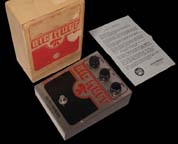
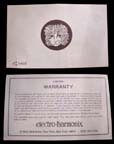
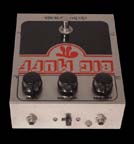
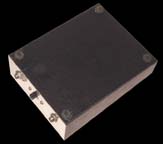
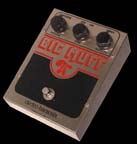

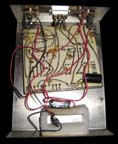
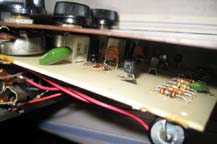
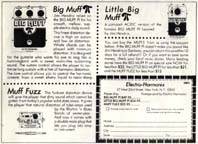 ..
..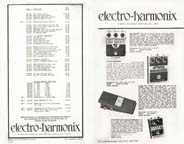 ..
..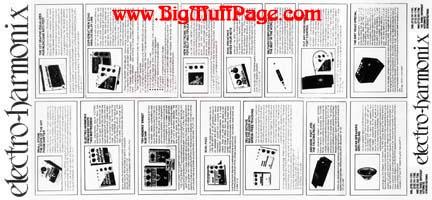
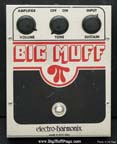
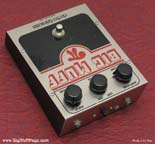
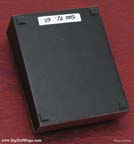
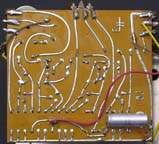
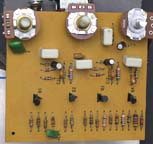
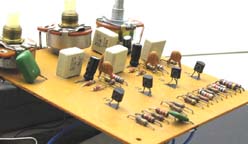
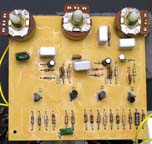
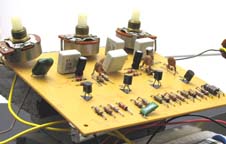

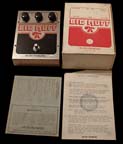
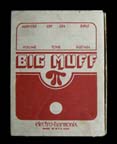
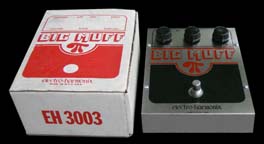
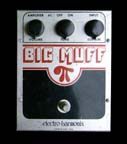
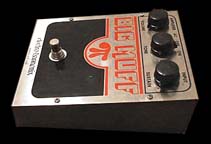
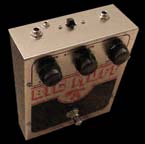
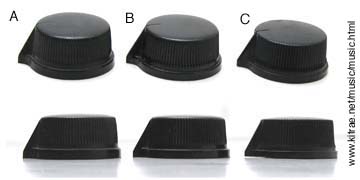
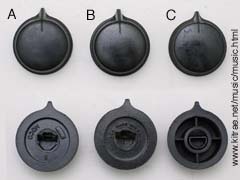
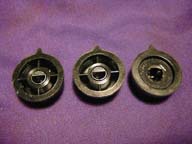
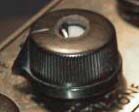
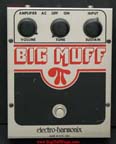
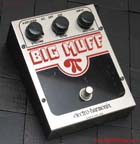
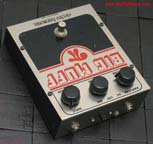
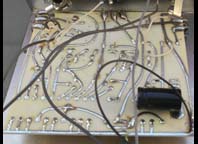
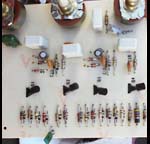
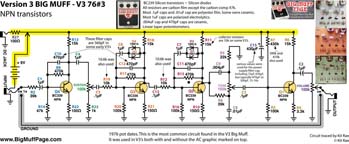
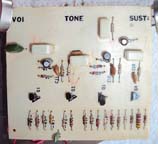
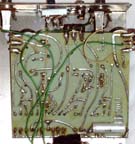
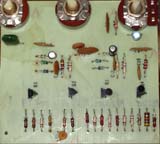
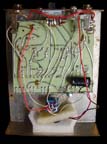
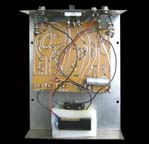
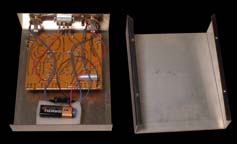
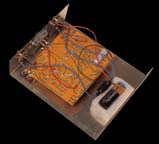
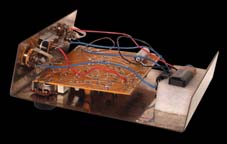
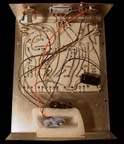
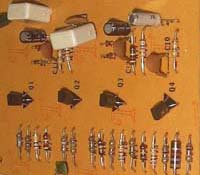
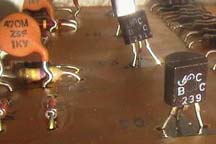
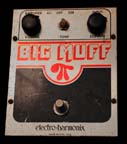
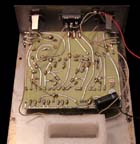
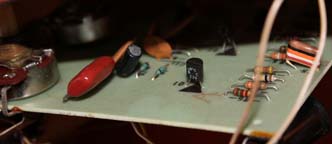

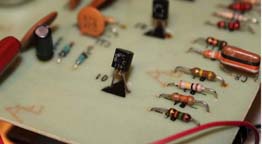
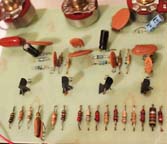
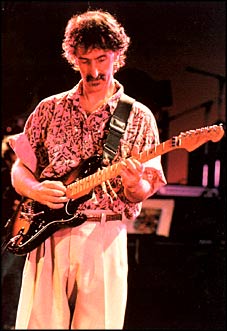
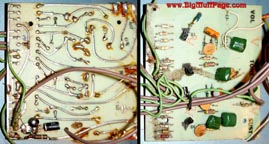
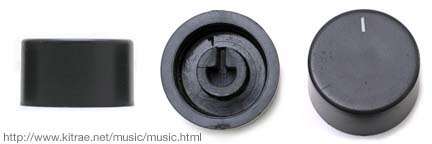
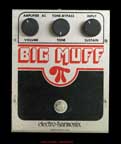
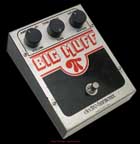
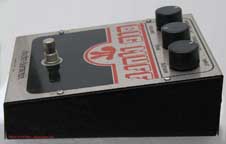
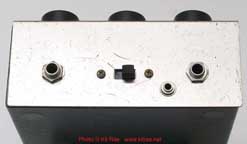
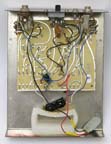
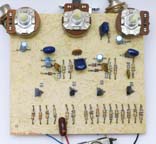
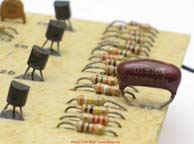
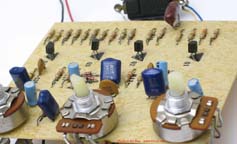
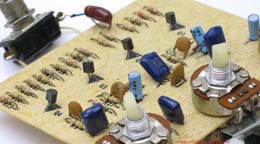
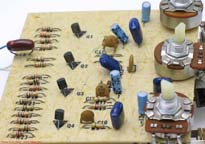
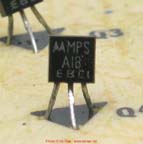
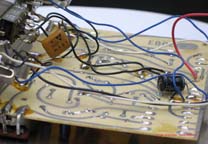
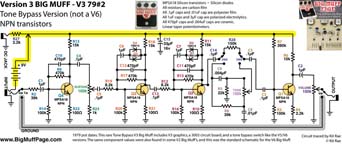
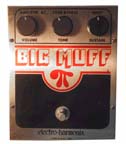
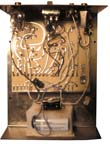
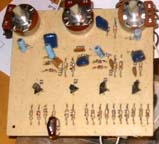

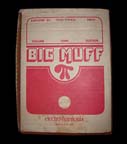
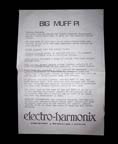
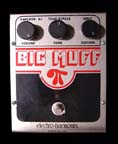
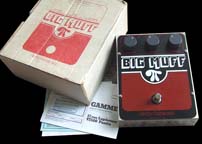
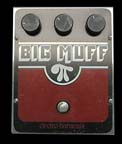
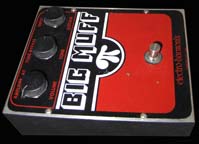

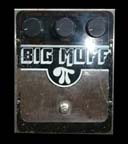
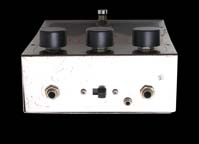
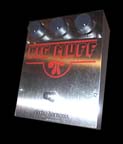
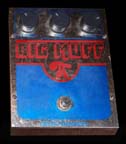
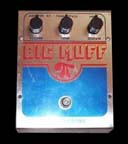
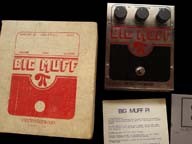
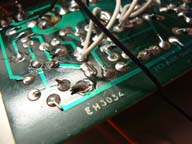
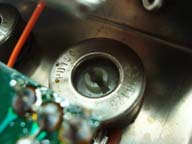
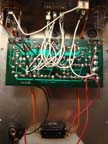
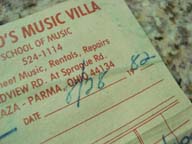
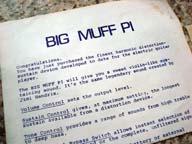
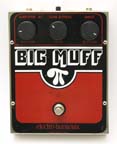
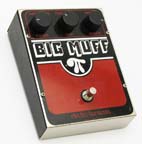
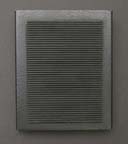
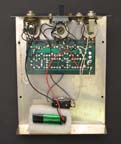
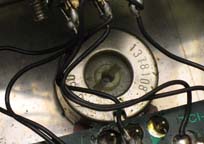
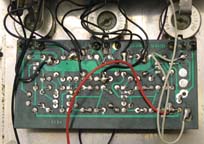
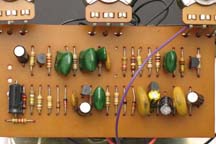
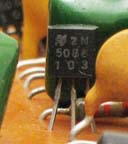
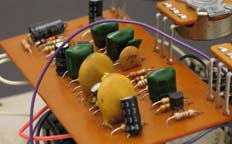
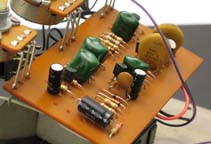
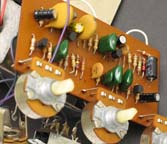
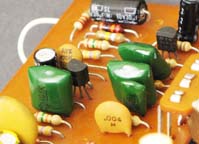
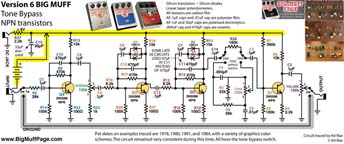
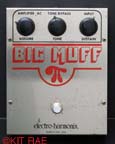
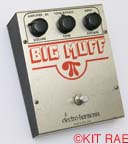
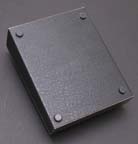
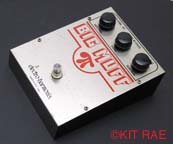
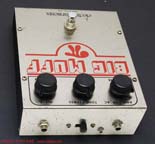
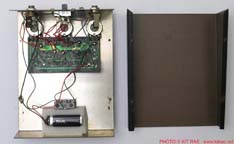
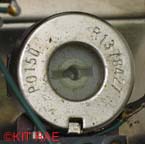
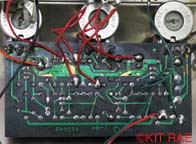
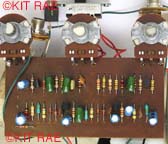
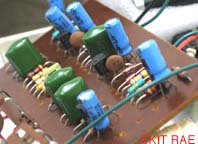
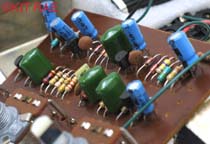
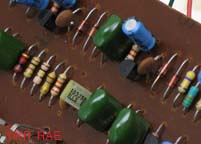
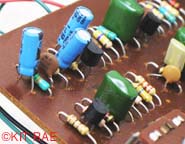
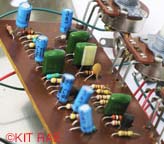
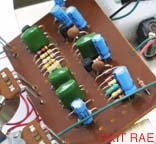
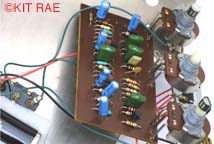
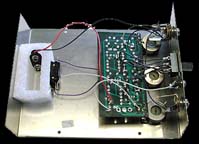
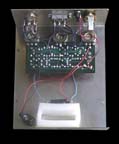
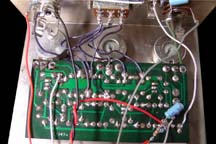
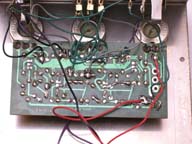

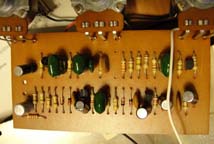
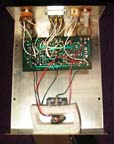
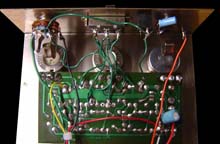
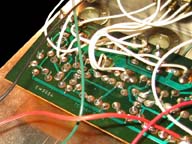 .
. 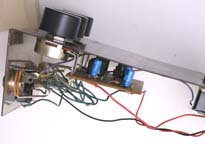 .
. 